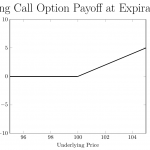
The elements of an income statement include revenues, gains, gross profit, expenses, losses, and net income or loss. The four key elements in an income statement are revenue, expenses, gains, and losses. Together, these provide the company’s net income for the accounting period. Primary revenue and expenses offer insights into how well the company’s core business is performing. Secondary revenue and fees, on the other hand, account for the company’s involvement and expertise in managing ad hoc, non-core activities.

In addition to helping you determine your company’s current financial health, understanding income statements can help you predict future opportunities, decide on business strategy, and create meaningful team goals. For instance, a consulting company may earn some rental revenue from properties owned. This will be non-operating revenue, not tied to the core consulting business. In addition, interest income earned from capital lying in the bank is also part of a non-operating revenue portfolio.
Adjustments and Expense Management
Expenses are how much it costs for a business to keep running and make money. Examples of gains are proceeds from the disposal of assets, and interest income. It reports these figures by using just one equation to calculate profits. It includes marketing costs, rent, inventory costs, equipment, payroll, step costs, insurance, and funds intended for research and development. Operating expenses are the expenses the company incurs through its normal day-to-day operations. It also helps business owners determine whether they can generate high profit by increasing prices, decreasing costs, or both.
What are the common items included in an income statement?
Automating data entry processes and conducting regular audits can help reduce manual data entry errors like duplication and omissions. It’s important to do monthly account reconciliations to maintain data integrity and ensure financial records are accurate and follow the rules. For the past 52 years, Harold Averkamp (CPA, MBA) hasworked as an accounting supervisor, manager, consultant, university instructor, and innovator in teaching accounting online. For the past 52 years, Harold Averkamp (CPA, MBA) has worked as an accounting supervisor, manager, consultant, how to calculate shares outstanding university instructor, and innovator in teaching accounting online. Income statements are designed to be read top to bottom, so let’s go through each line, starting from the top.
Income Statement Analysis
- Interest expenses are expenses incurred by a business for borrowed funds.
- Also known as profit and loss (P&L) statements, income statements summarize all income and expenses over a given period, including the cumulative impact of revenue, gain, expense, and loss transactions.
- All such information is provided solely for convenience purposes only and all users thereof should be guided accordingly.
By generating income statements and other financial reports on a regular basis, you can analyze the statements over time to see whether your business is turning a profit. You can use this information to make financial projections and more informed decisions about your business. The income statement is an integral part of the company performance reports. While the balance sheet provides a snapshot of a company’s financials as of a particular date, the income statement reports the best ways to prevent overdue accounts receivable and accounts payable free essay sample income through a specific period, usually a quarter or a year.
It starts with the top-line item which is the sales revenue amounting to $90,000. The illustration above comprehensively shows the different levels of profitability of XYZ Corporation. This metric evaluates the efficiency of a company at utilizing its labor and supplies in producing its goods or services. However, it uses multiple equations to determine the net profit of the company. Our platform features short, highly produced videos of HBS faculty and guest business experts, interactive graphs and exercises, cold calls to keep you engaged, and opportunities to contribute to a vibrant online community. We offer self-paced programs (with weekly deadlines) on the HBS Online course platform.
You can also look at QuickBooks Online subscription levels and see a comparison of QuickBooks vs. Xero accounting software. Competitors also may use income statements to gain insights about the success parameters of a company, such as how much it is spending on research and development. Net income is then used to calculate earnings per share (EPS) profitability index calculator using the average shares outstanding, which are also listed on the income statement.
The business also gained $1,500 from the sale of an old van and incurred a $2,000 loss from a pending lawsuit. It is a statement prepared by companies that operate globally offering a wide range of products and services and consequently incurring an array of expenses. Given the nature of their operations, such entities have a complex list of activities and costs to account for.
Revenue may also be referred to as the “top line,” because it is the first line on the income statement. The company also realized net gains of $2,000 from the sale of an old van, and incurred losses worth $800 for settling a dispute raised by a consumer. For example, a customer may take goods/services from a company on Sept. 28, which will lead to the revenue accounted for in September. The customer may be given a 30-day payment window due to his excellent credit and reputation, allowing until Oct. 28 to make the payment, which is when the receipts are accounted for.
Common size income statements include an additional column of data summarizing each line item as a percentage of your total revenue. Small businesses typically start producing income statements when a bank or investor wants to review the financial performance of their business to see how profitable they are. Income statements provide a summary of the performance of a company during a specific accounting period and are useful for various stakeholders like management, investors, lenders, and creditors. A monthly report, for example, details a shorter period, making it easier to apply tactical adjustments that affect the next month’s business activities. A quarterly or annual report, on the other hand, provides analysis from a higher level, which can help identify trends over the long term. Operating income is the result of subtracting the company’s operating expenses from its operating revenues.